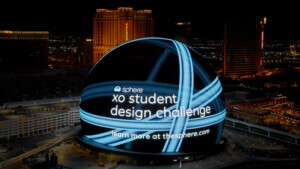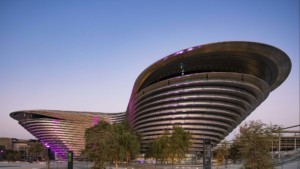“I started as a commercial artist, and I want to finish as a business artist…During the hippie era, people put down the idea of business. They’d say, ‘Money is bad’ and ‘Working is bad.’ But making money is art, and working is art—and good business is the best art.”
—Andy Warhol
McKinsey & Company’s recent study on design confirms what designers have long known to be true. And it recommends all businesses do more of it. To McKinsey, design is the single most important factor for growth and should be an integral part of every organization. For it to have the greatest impact, McKinsey advises companies to make design a cyclical process instead of a single phase in a project, and dedicate the time needed to achieve good results.
On the occasion of the McKinsey Design Index’s release, AN contributor Jeffrey Inaba talked with Ben Sheppard, one of the report’s authors.
Jeffrey Inaba: It’s fascinating that companies are interested in improving their quality of design, but they aren’t sure how to go about it. The Index says, “Less than 5 percent of the companies surveyed reported that their leaders could make objective design decisions, from developing a new product to entering a new sector.” That’s a surprising realization about the state of the business world.
Ben Sheppard: In the last five years we’ve received a critical mass of questions from business leaders about design, and so we thought we needed to do a global study on what the opportunity is. They’ve got the highest of aspirations—they want to make the next iPhone, the next Amazon Prime—but they don’t know what actions they should take to give their companies the best possible chance at designing the best products and services.
JI: What correlations were found between design and business performance?
BS: There are two things. First is the business value of design, and second are the actions leaders should take to capture that value. On the first, there are three numbers to remember.
One: Those people who are top performers in terms of design significantly outperform their industry peers—as much as 70 percent higher shareholder return gross than their industry peers.
Two: Across the board, whether you’re doing product, physical, or digital design, good design is good for business regardless of what type of design you are doing.
Three: The study showed that the companies who are best at design were disproportionately rewarded in a given industry. Users care about the very small number of companies in an industry that are consistently making the best products and services.
These are remarkable numbers. At McKinsey we do a lot of essential science research pieces. This is one of the most statistically significant correlations we’ve seen in years.
The second part: Because the study was done in such a rigorous and detailed way, not only can we say at the broad level that design is the most tremendous engine for business growth, we can point out the individual actions that show the best correlation with improved business performance. This is a world first, to tie individual leaders’ actions to performance.
JI: Good. Before we get into the actions, what is McKinsey’s definition of design?
BS: For our clients, design is understanding users’ needs and then creating fantastic products and services to meet those needs; put the prototype into users’ hands and listen to what they’re telling you.
JI: It must be a sea change for many companies to go from seeing design as an added cost reserved for special projects to an essential part of what they do as a business. Let’s start with the section, “More than a Feeling,” since it touches upon this paradigm shift.
BS: What we’ve found is that those companies that have treated design with the same rigor as they treat discussions on revenue and cost significantly financially outperformed their peers. The companies who quantified design metrics in their discussions about design outperformed their peers.
JI: Of the recommended actions, the section called “More Than a Phase” stands out as a key lesson for businesses. Design firms try to communicate to clients that paying for the hours to iterate are worth it since the added time will lead to a better, more desirable project outcome. McKinsey’s study argues precisely for this point.
BS: Yes. We have very clear evidence that those companies who just have one discrete design phase are outperformed by those companies who iterate with their end users from early strategy to postlaunch.
JI: What does McKinsey say to companies who are hesitant to invest the time in undertaking an iterative process?
BS: It’s a case of investing to save. Take Disneyland, for example. The first prototype of the MagicBand [an all-in-one wristband device for Disneyland/World guests] cost 40 dollars and is made from parts from Home Depot. If you iterate early, you do so at lower cost. If you have a single design phase and decide to make all your investment at once, then if it turns out you were wrong, you’ve got a huge loss. When you talk about the risk associated with that, not just from a cost point of view, but also from a sales point of view, it’s easier to quantify why iteration is so important.
JI: “More Than a Product” observes that just about any project involves the design of a digital as well as physical side. Whether it’s a building or a car, there needs to be a digital component to a product.
BS: Traditionally, many industries thought of themselves as only physical or only digital. Now everything has some combination of digital plus physical space. We found that all the companies that historically have been very good at just hardware or just software now find the very thing that gave them success in the past is something of a burden in the future. The automotive industry is a great example of this. For decades, it was all about hardware. Now suddenly their users are saying, “We expect a great experience, from the digital apps within the vehicles themselves to the way that software integrates with the rest of my life.” That’s a real challenge for car companies. But the rewards are rich. Those companies that are able to break down the internal barriers between service design, experience design, front-end, back-end, user interface, and user experience and provide a great overall experience are outperforming their peers.
JI: How can companies take advantage of the different speeds of digital and physical production? Execution is much faster on the digital side. How can that help the experience of the physical side?
BS: It’s so much easier to iterate in a software environment than it is in a physical one. What we have found, though, is even in industries where traditionally people have thought it’s impossible to iterate, you can iterate. One example is shipping. It could take as many as ten years for a ship to go from concept to launch. In the past, there was one design, which was locked in at the beginning, because they said you can’t iterate a whole ship. Now there are two different design specifications, one that is locked early on, and a second one for software—for control and operation systems. As technology evolves and its operators’ ways of working evolve, iterations can continue to be made to those systems. When it’s launched a decade later, the software is modern, intuitive, and easy to use.
JI: A McKinsey retail banking study found that early technology adopters prefer their most important transactions to occur in physical spaces. In other words, people who are deeply interested in digital technology are deeply interested in physical environments. When making important decisions, they take cues from the person they interact with and the design of the space they’re in. Are companies thinking about the design of their physical environments given that physical space becomes more consequential as our lives become increasingly digital?
BS: I’m working with a car dealership, which has traditionally been a physical environment. We hear lots of pain points with that model: Often the centers are outside of towns; you need to travel to them; the salespeople are often commission-based and that can lead to a pressurized environment. Therefore, some people hypothesized that the future of automotive was basically an Amazon for cars. It would all be digital. Different companies piloted that, and they found it doesn’t work. People want a combination of physical and digital. While you can make things more efficient by moving to digital, often, particularly for large purchases, people still want a human connection. And as you say, the physical environment can have a big effect on that experience.
JI: With the completion of the study, McKinsey has a good overview of the industries that can benefit from good design. What industries do you believe will have the greatest benefit?
BS: We’ve seen the power of design on everything from energy to consumer goods to hospitality.
We believe it’s a signal that design has come of age. Across industries, design is a priority for senior management. I don’t know a single company where creating fantastic products and services don’t matter. Frankly, if you’re not doing that, then why are you a company at all?











